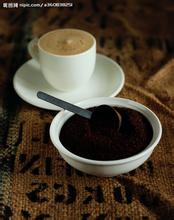Pakamara Green Coffee Bean Sample Flavor Description Taste Grind Scale Region Introduction
Taste description of Pacamara raw coffee beans an introduction to the production area of grinding scale
Coffee production in El Salvador. In its heyday, it was once the fourth largest coffee producer in the world, but decades of civil war almost dragged down the coffee industry. fortunately, the war has stopped in recent years, and the coffee industry has come back to life. The only benefit that the civil war brought to the country of El Salvador was that the farmers left their fields barren and failed to catch up with the most popular Katimo sun-exposed cultivation train in the past two decades, thus preserving the ancient varieties of bourbon and Tibica, that is to say, El Salvador still uses the most traditional shade planting methods.
It has a positive effect on the aroma of coffee. In 2005, the Salvadoran mixed-race Pacamara boasted in coe, which confused many international cup testers and did not know how to score it. It was never expected that this hybrid bean not only broke the mellow boundary of coffee, but also expanded the visibility of Salvadoran coffee.
The coffee harvest lasts from November to March. The fresh fruit of coffee is picked by hand. Coffee in El Salvador is grown mostly by small farmers, who grow it in the traditional way: almost 100% shade. The coffee harvest lasts from November to March. All the fresh coffee fruits are picked by hand.
Pacamara (Pacamara): the pedigree is very complex. It is a hybrid of the Tibika variety elephant bean and the bourbon variety Pacas. Huge beans, second only to elephant beans, is a rising star in El Salvador and a hybrid breed of high-quality coffee all over the world in the past two years. Won two ○○ seven Guatemala and Honduras [COE] double championships, but also arranged to host the top three awards in El Salvador. The name "Pacamara" is very good. It is a compound word of Pacas [Pacas] and elephant bean [Maragogepe]. Pacamara is an excellent variety produced by the Salvadoran Coffee Research Institute from 1957 to 1958. It was not until recent years that it became the darling of fine coffee.
It has a positive effect on the aroma of coffee. In 2005, the Salvadoran mixed-race Pacamara boasted in coe, which confused many international cup testers and did not know how to score it. It was never expected that this hybrid bean not only broke the mellow boundary of coffee, but also expanded the visibility of Salvadoran coffee.
I can't agree that Bezzera invented Espresso alone, although he was the first to try to use steam as a pressure to make a commercial coffee machine and created the Espresso culture that is currently made in the bar and injects coffee directly into the guest cup. However, the coffee brewed by this kind of coffee machine still does not have the delicious taste of Espresso and is full of Crema. This is mainly because Bezzera's coffee machine uses the steam produced when the water boils, which forms pressure in an airtight boiler and pushes hot water into the coffee powder in the shower head. In order to make steam, the whole boiler must be heated to boiling, causing hot water near the boiling point to burn the coffee powder, lose the aromatic oil hidden in the coffee powder, and extract the doubly bitter coffee. There are two main reasons why coffee brewed from Bezzera's machine cannot form Crema.

Important Notice :
前街咖啡 FrontStreet Coffee has moved to new addredd:
FrontStreet Coffee Address: 315,Donghua East Road,GuangZhou
Tel:020 38364473
- Prev

Description of Flavor of Coffee Bean and Red Wine by Flavor description Grinding scale production area Manor
The processing method of coffee bean and red wine is described in general. In general, the processor injects carbon dioxide into the container to prevent oxidation from producing volatile acid. this process is called lactic acid fermentation, which produces malic acid and stone acid. the stone acid is relatively stable, so the beans fermented by lactic acid are more sour, with cheese flavor, nutty flavor and cream flavor.
- Next

Description of Flavor of Water-washed Coffee and Solar Coffee Honey Flavor description of Grinding Calibration area varieties
Flavor description of water-washed coffee, sun-dried coffee honey, taste treatment, grinding, calibration, production area, variety introduction, harvest, sunburn, shelling machine (removal of pulp, etc.) grading (electronic bean selector or hand)
Related
- Guji coffee producing area of Guji, Ethiopia: Humbela, Shakiso, Wulaga
- What is the most expensive variety of Qiloso in BOP multi-variety group?
- How to store the coffee beans bought home?
- Why are Yemeni coffee beans so rare now?
- Ethiopian Sidamo all Red Fruit Sun Sun Santa Vini Coffee beans
- SOE is mostly sour? What does it mean? Is it a single bean? what's the difference between it and Italian blending?
- Is Italian coffee beans suitable for making hand-brewed coffee?
- How to choose coffee beans when making cold coffee? What kind of coffee beans are suitable for making cold coffee?
- Just entered the pit to make coffee, what kind of coffee beans should be chosen?
- Can only Japan buy real Blue Mountain Coffee? What are authentic Jamaican Blue Mountain coffee beans?

